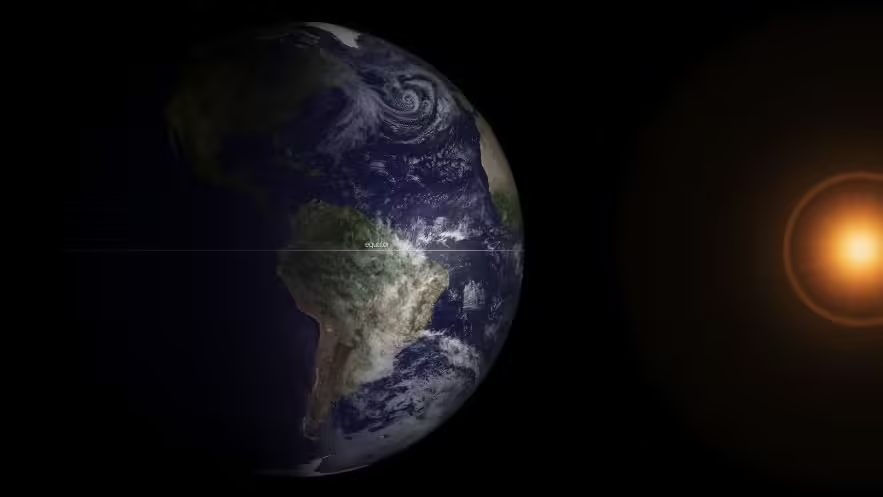The vernal equinox is one of the oldest solar celebrations in human history. Some cultures have celebrated the official start of spring for over 3000 years, evidence that knowledge of solar cycles predates modern science. The word sun comes from the Old English sunne. The ancient Greeks called their sun god Helios, and the Romans called their personification of the sun Sol. Even today, the words Sun, Sol, and Helios are used to describe seasonal patterns and to indicate the annual orbit of the Earth around the Sun.
upper spring Vernal Equinox (Saturday, March 20, 2021) If you’re on the equator, the Sun is directly overhead. People north of the equator already have longer days than nights, while those in the Southern Hemisphere are experiencing longer nights with each passing day. If you’re at the North or South Pole, the shadow line that separates day and night crosses directly across the poles of our rotating planet. While Earth transitions into Northern Summer, the North Pole won’t experience the next sunset until the Autumn Equinox in September.

As summer approaches in the Northern Hemisphere, Earth is also moving away from the Sun. As Earth orbits Helios (Greek for “Sun”), the point at which Earth is farthest from Helios is called aphelion, which will be experienced on July 5, 2021.

This is good news because the Northern Hemisphere’s summer is not as hot because it is farther from the Sun. The day when the Earth is closest to the Sun is called perihelion, which occurred on January 2, 2021. At aphelion, the Earth is 3 million miles farther from the Sun than it was at perihelion, so less solar energy reaches Earth in July. Conversely, the Southern Hemisphere’s summer is hotter because it coincides with perihelion.
The spring equinox marks the midpoint between the extremes of the sun and the transition to a half year where more solar radiation (incoming solar radiation) reaches the Northern Hemisphere. Much of the solar energy is absorbed by ocean waters near the equator in the Northern Hemisphere, where it evaporates more easily and forms clouds in the sky. That warm water flows west and north along the western side of the ocean basin. This is what causes the storms and moisture that characterize the East Coast of the United States. The cold water from the Arctic flows south along the eastern side of the ocean basin and evaporates less, so the climate along the Pacific coast of the United States is dry. The reason the climate changes is because the relative positions of the Earth and the Sun change, which determines where most of the solar energy is absorbed and how it circulates around the atmosphere and oceans. In the coming months, those of us in the Northern Hemisphere can look forward to warmer weather and a sun that rises higher above the horizon. Thousands of years ago, our ancestors who lived in the Northern Hemisphere noticed that the season of warmer weather and more abundant crops was approaching, and they marked the season of celebration… and it still is today.

